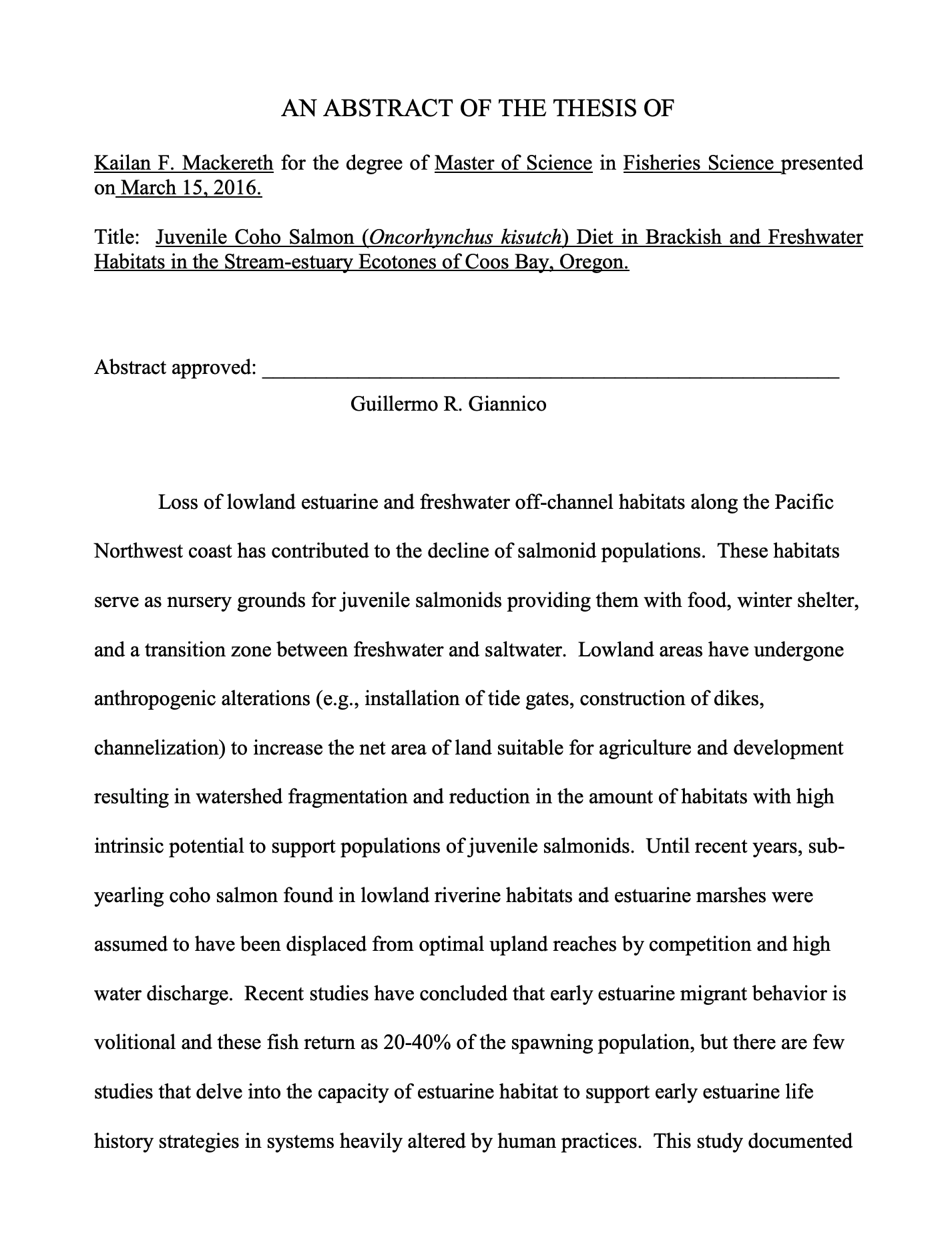
Loss of lowland estuarine and freshwater off-channel habitats along the Pacific Northwest coast has contributed to the decline of salmonid populations. These habitats serve as nursery grounds for juvenile salmonids providing them with food, winter shelter, and a transition zone between freshwater and saltwater. Lowland areas have undergone anthropogenic alterations (e.g., installation of tide gates, construction of dikes, channelization) to increase the net area of land suitable for agriculture and development resulting in watershed fragmentation and reduction in the amount of habitats with high intrinsic potential to support populations of juvenile salmonids. Until recent years, subyearling coho salmon found in lowland riverine habitats and estuarine marshes were assumed to have been displaced from optimal upland reaches by competition and high water discharge. Recent studies have concluded that early estuarine migrant behavior is volitional and these fish return as 20-40% of the spawning population, but there are few studies that delve into the capacity of estuarine habitat to support early estuarine life history strategies in systems heavily altered by human practices.
